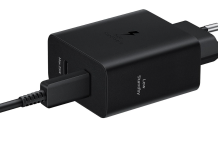Samsung’s newly launched flagship smartphones — Galaxy S10 series, have been very well-received. The company seems to have managed everything that matters to a regular user in one package — design, camera, performance, and battery life.
In Mainland China, according to the reports, the South Korean giant has managed to ship more than 500,000 units of its Galaxy S10 series smartphones so far. This isn’t surprising given that the company had managed to sell the same number of S10 series devices in 7 days what took 30 days for the S9 series phones.
Recently, the phone was sold out in Hong Kong within two weeks of its launch. Seeing the demand for the newly launched flagship smartphones, the sales forecast for the devices have been increased by 3 percent and Samsung is expected to sell around 40 million to 45 million units this year.

Coming to the pricing, the Galaxy S10e is priced at 4,999 Yuan and costs just 1,999 Yuan if you exchange your old device. The Galaxy S10 is priced at 5,999 Yuan but costs 2,999 Yuan with old-for-new phone offer. On the other hand, the Galaxy S10 Plus costs 6,999 Yuan but is available for 3,999 with the exchange offer.
The Galaxy S10 sports a 5.8-inch “Dynamic” Infinity-O AMOLED while the S10+ comes with a bigger 6.44-inch display. The display supports QHD+ resolutions and 19:9 aspect ratios and is HDR10+ certified. The devices come with an ultrasonic in-display fingerprint sensor which Samsung says is faster than the optical fingerprint sensors.
The new S-series smartphones are powered by Qualcomm’s latest Snapdragon 855 chipset while the international version will be powered by Exynos 9820 chipset. As for the memory configuration, the S10 will be available with 6GB/8GB RAM and 128GB/512GB storage while the Galaxy S10 Plus comes with 6GB/8GB/12GB RAM and 128GB/512GB/1TB of native storage.

The camera configuration includes a regular 77-degree 12MP sensor with an F1.5/F2.4 variable aperture, a 12MP 2x telephoto snapper with a 45-degree viewing angle and a fixed aperture of F/2.4 and an ultra-wide 16MP camera with a 123-degree viewing angle and a fixed F2.2 aperture. The front sensor for the Galaxy S10 is a single 10MP camera while the Galaxy S10 Plus has a dual camera with an 8MP RGB secondary sensor.
Both the smartphones come with stereo speakers, a USB Type-C port, IP68 water-resistance, and a dedicated Bixby button. The S10 is powered by a 3,500mAh battery while the S10 Plus packs a bigger 4,100mAh cell, both supporting wired as well as wireless fast charging.
On the other hand, the Galaxy S10e comes with a 5.8-inch Infinity-O AMOLED display with a resolution of 1440×2960 pixels and is powered by Snapdragon 855 chipset paired with 6GB+128GB and 8GB+256GB combo.
The phone doesn’t have an in-display fingerprint reader but has a traditional fingerprint sensor on the right side of the device. The device packs a dual camera setup on the back, which includes a 12MP dual aperture camera (F/1.8; F/2.4) with optical image stabilization, alongside a 16MP ultra wide angle one. The phone still has a 10MP sensor for selfies just like the others.
Read More: Samsung starts mass producing 12 GB LPDDR4X RAM modules for smartphones
The Samsung Galaxy S10e packs a 3100mAh battery while for connectivity, it has Wi-Fi 6 (Wi-Fi 802.11 ax), LTE Cat. 20 with up to 2Gbps download speeds, NFC and Bluetooth 5.0. Just like the Galaxy S10, S10 Plus, this one too runs Android 9 Pie-based One UI custom interface on top.







